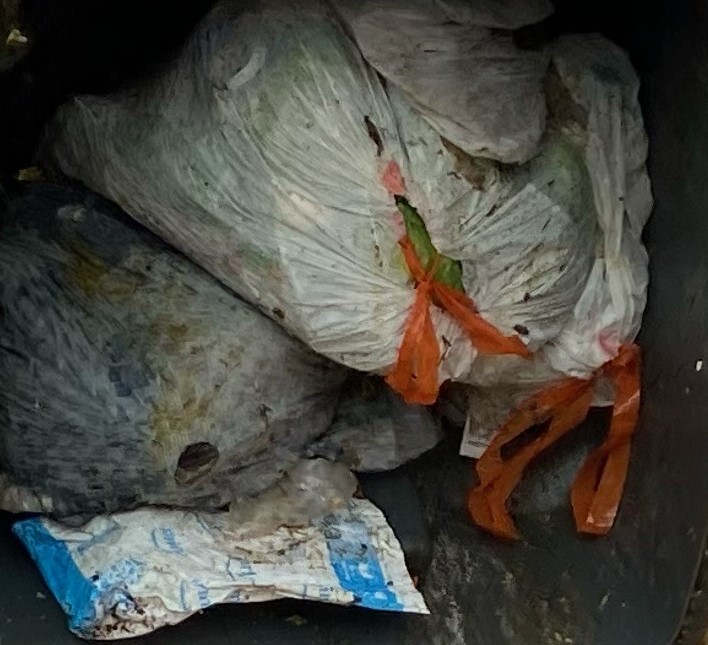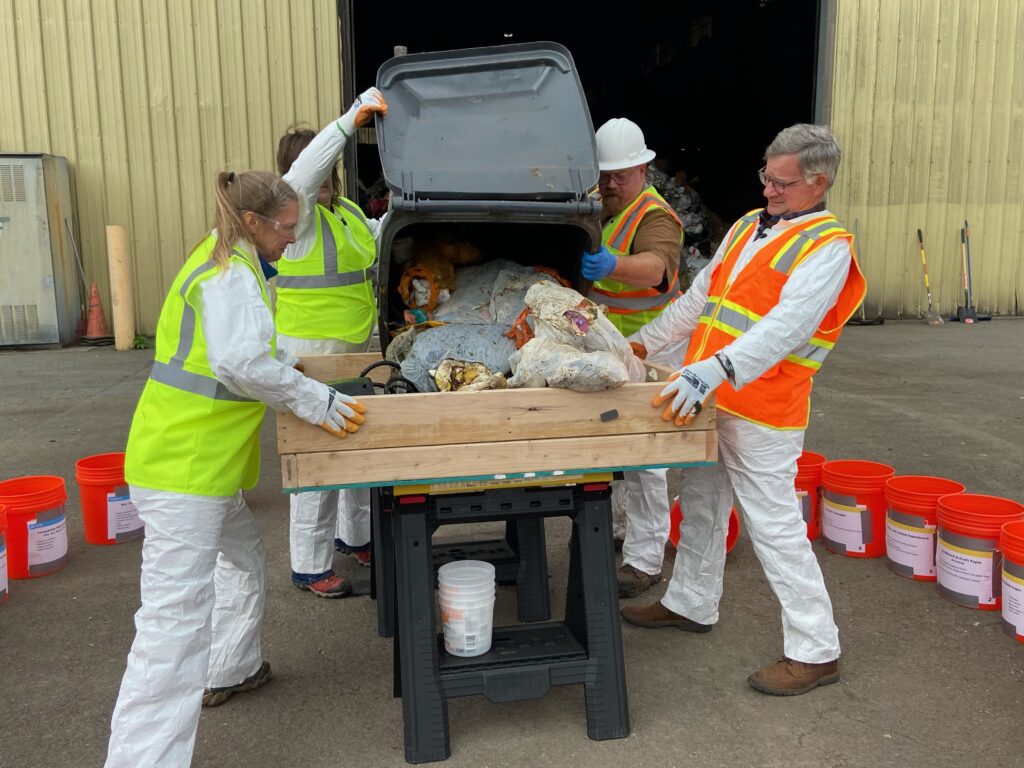
As I have said many times before, there is nothing like seeing things firsthand. And sometimes that goes for smelling them, too.
How do we know how long our landfill will last? How do we help our community change some long-established habits? How effective are our recycling programs?
How would you answer these questions?
For most of us these are hypothetical questions – but these answers are critically important for our Planning & Public Works Solid Waste Team. They are responsible for both how we manage our trash and recycling today, as well as planning decades into the future.
I recently joined Karen Hultgren and Kari Ann Elling from our Solid Waste Team on a “garbage audit” at the Hidden Valley Transfer Station near Graham. You may remember them (along with their PPW colleagues) from the “If You Can Eat It, You Can Compost It” campaign that encouraged residents to put their food waste into their yard waste recycling bins. Their great work earning a Standing Ovation Award this year!

This latest episode of Inside Pierce County shows how they conduct the audit – an important but potentially gag-worthy job.
Here are a several take always from my time auditing Pierce County’s trash:
- Most people never think about where their trash goes after they’ve put their bin out for pick up. But we need to ensure we can dispose of it safely and cost effectively. Once our current landfill is full, we will likely never be able to site another one in Pierce County – meaning we will shift to “long hauling” our solid waste out of state at increased expense. So, anything we can do to reduce our solid waste, including increasing our recycling, will extend the lifespan of our landfill.
- We still have a significant opportunity to get food waste out of our trash and into the yard waste where it can be effectively recycled.
- While disposable diapers are gross, they do belong in the trash.
- If you must dispose of a needle from medication injections, and don’t have access to a “Sharps” disposal container, put the used needle into a plastic bottle and screw the top on it and label it “Biohazard.” Keeping our solid waste employees safe is more important than recycling the bottle. More information on this is available here.
- The audit was incredibly comprehensive – the team sorts into 68 different categories.
The most significant change I made after helping with the audit is how I recycle plastic. I mistakenly thought anything with the “plastic recycling triangle” meant I could put it in my recycle bin. Many plastic items, like blister packaging and lids aren’t recyclable. So, with the best of intentions, I was making it harder for our recycling efforts! Fortunately, Karen and Kari Ann taught me what I should be putting in my recycling container and gave me a refrigerator magnet explaining it, too. It you have questions about how to effectively dispose of and recycle solid waste, go to https://www.piercecountywa.gov/4665/Detailed-Curbside-Recycling-List. And if you want a refrigerator magnet you can request one!
Thanks, again, to Karen and Kari Ann for spending the afternoon with me and doing the critical “dirty job” audit of our garbage and recycling!
I am now the recycling expert in my home and a much better steward of my trash and our landfill!
Thanks for reading, and be glad you couldn’t smell it firsthand!

Bruce
